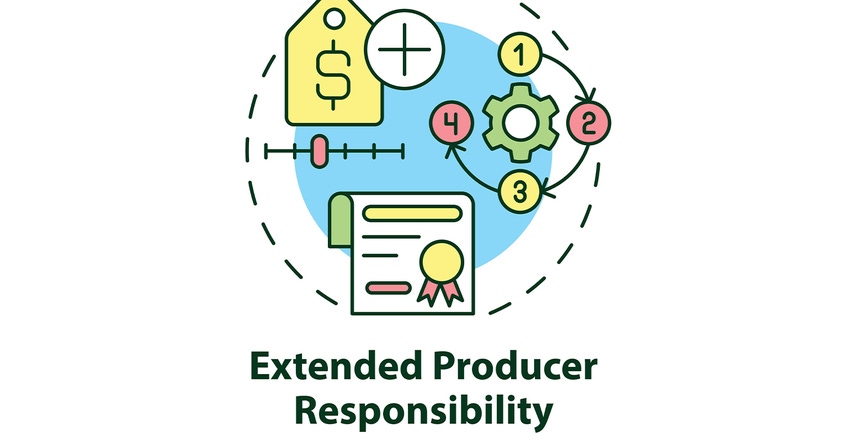Colorado Ramps Up for Statewide EPR Implementation
The proposed list of “minimum” items, informed by producers, haulers, and materials recovery facilities among stakeholders will be re-evaluated each year and includes 24 materials. A few of them are corrugated cardboard; uncoated paper for general use; low-grade printing and writing paper; newspaper and newsprint; aseptic cartons; non-metalized gift wrap; clear PET containers, including thermoform; and HDPE containers.

Colorado’s soon-to-launch extended producer responsibility law (EPR) for packaging and paper could more than double the state’s recycling rate for these materials, according to a needs assessment of Circular Action Alliance (CAA), the producer responsibility organization who will run the state’s EPR program.
Colorado inches closer to implementation now that a specific recycling service setup has been approved—one of several scenarios that CAA studied—and with a proposed list of items to be recovered in place.
The chosen scenario, expected to achieve a recycling rate between 34 percent and 40 percent in 2030, and between 51 percent and 57 percent in 2035, includes these key elements:
Curbside recycling services in the same frequency as waste collection (which will be weekly or bi-weekly, depending on region)
Non-resident covered entities will also receive services by 2028.
Expansion of drop-off sites and investments in composting facilities
Standardized, statewide list of materials that can be recycled, and a producer-funded recycling education program based on best practices
Executing an expansion in services will be no small transition. It will mean adding curbside recycling to 31 percent of households in evaluated municipalities, or another 500,000 households. Outside of municipalities, in census-designated and rural areas, an additional 100,000 to 200,000 households would receive service.
Part of the plan to achieve this bump is to increase materials recovery facility capacity by 600,000 tons. At this stage CAA is still gathering input to inform how to carry out this undertaking, and a CAA spokesperson told Waste360 it is too soon to speak to exactly where the processing capacity will come from and how long it will take to build it.
“We are in the process of collecting additional information and data to supplement what we learned in the needs assessment and to ensure we are making the most informed and efficient decisions as we develop the program plan for next February. We are consulting with a variety of stakeholders to ensure we can implement the approved scenario,” CAA says.
One standout finding is that there is big opportunity to create a closed loop system for glass, given the capacity of two Colorado-based businesses: Rocky Mountain Bottle Company, who produces millions of glass bottles a day and O-I Glass, also one of the world's largest glass container manufacturers.
“Apart from glass, currently all end markets are mainly outside Colorado; however, we have heard of prospective buyers for plastics and more end markets may develop as the program gets off the ground. Glass buyers have indicated that they are committed to buying more volume, if available and delivered to their specification,” CAA says, adding that there are growing opportunities in nearby states for most of the targeted commodities.
The proposed list of “minimum” items, informed by producers, haulers, and materials recovery facilities among stakeholders will be re-evaluated each year and includes 24 materials. A few of them are corrugated cardboard; uncoated paper for general use; low-grade printing and writing paper; newspaper and newsprint; aseptic cartons; non-metalized gift wrap; clear PET containers, including thermoform; and HDPE containers.
A proposed “additional” list includes shredded paper; molded pulp food service ware; poly-coated packaging, and film, among packaging items and materials.
Colorado has regions with unique needs, and accounting for each has been part of the planning process. For example, the Mountains region has seasonal fluctuations in population, which can more than double during the busy summer and winter months. This will require customized capacity planning, contamination monitoring, and education for transient populations, CAA says.
While some customization will be required, the general consensus is that having a common collection system where all households are able to recycle the same suite of packaging materials is important. It allows for effective publicity and education and helps reduce contamination since what can be recycled in one municipality is the same as in neighboring ones. And having a uniform minimum recycling list is expected to help improve recycling end markets.
Eunomia Research & Consulting, along with HDR Engineering, prepared the assessment. Colorado is the first state to complete its needs assessment, with several other states wrapping them up this year and in coming years, according to Sarah Edwards, CEO of Eunomia, North America
“Understanding the diverse service needs of communities is critical to putting in place systems and service that can maximize the quality and quantity of recyclables to support a circular economy. We are super happy that the work in Colorado will set the standard for other states and result in real investment to help mitigate the impact of our waste on communities and the environment,” Edwards says.
EPR in Colorado is not only expected to increase the recycling rate to an estimated 55 percent, but it will also create up to 7,900 jobs and avoid an additional 1.3 million metric tons of CO2e annually.
“Through our scenario modeling in the needs assessment, we showed that the design of the program can influence the amount of material collected and cost. But even in the lowest [recovery rate] scenario we modeled, the recycling rate would double, showing the powerful impact of EPR policy,” Edwards says.
Next on the agenda is to conclude the rulemaking process in spring of 2024 and to include an earlier producer registration deadline (October 2024).
“Early producer registration is critical because we need producers to start reporting data so we can accurately estimate fees. Fee estimates will be impacted by the number of producers in the system and the amounts and types of covered material they are putting into Colorado,” CAA says.
About the Author(s)
You May Also Like



